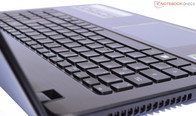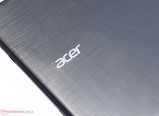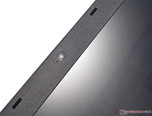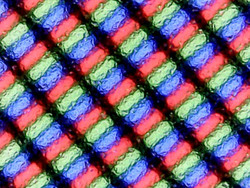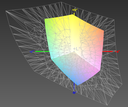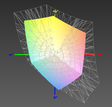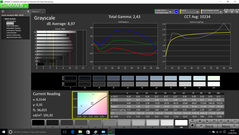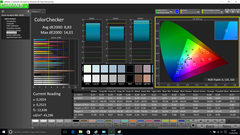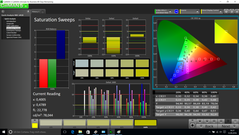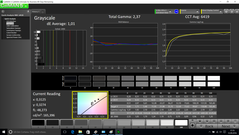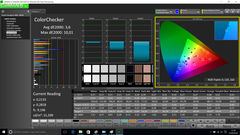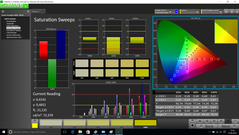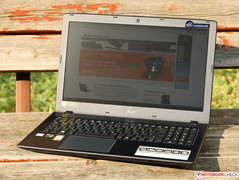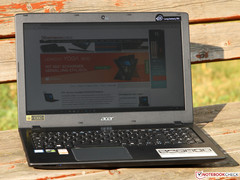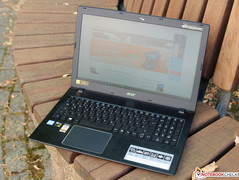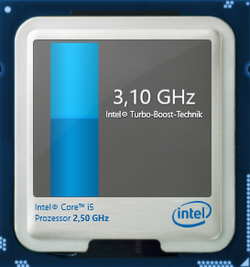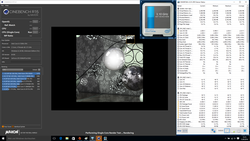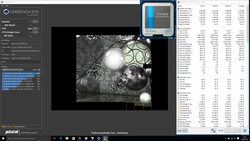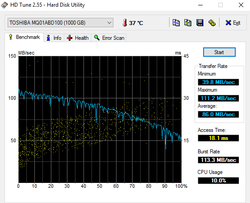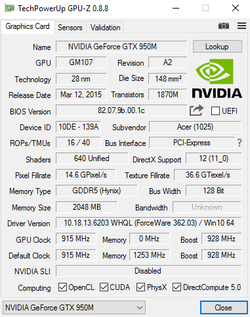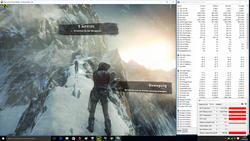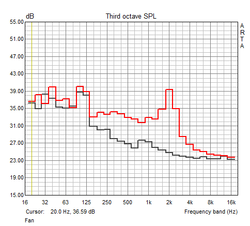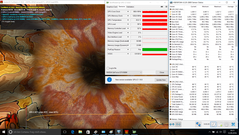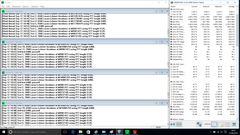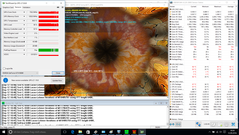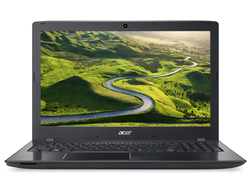Acer Aspire E5-575G (i5-7200U, GTX 950M) Notebook Review

For the original German review, see here.
Not every gaming savvy customer is willing to spend several thousand Euros on a gaming-suitable, high-end laptop by manufacturers such as ASUS, MSI or Schenker. However, this is not really necessary: Many cheaper devices are quite capable of rendering up-to-date games smoothly – albeit with some concessions in resolution and details.
Acer promises just this with its new Aspire E5-575G. Not only has it incorporated a cutting-edge Core i5 processor from the Kaby Lake generation into the 15-inch device, but also a dedicated GeForce GTX 950M as well a fast GDDR5 memory, all for just 630 Euros (~$707). Although its other configuration features in the form of 8 GB of RAM, a traditional 1000 GB hard drive and Linux operating system (that we replaced with a Windows 10 64-bit version in the test) can be classified as mediocre, the Taiwanese manufacturer seems to have created a potential price-performance bargain here. The following test will clarify whether losses in quality have to be accepted elsewhere.
Consequently, we will compare the Aspire E5-575G with its F5-573G (GTX 950M, i5-6200U) sister model, Medion's Erazer P6661 (GTX 950M, i7-6500U), and the somewhat more expensive Nexoc M512 III (GTX 950M, i7-6700HQ) powered by a quad-core among others.
Differences to the Aspire F5-573G
Since the casing, connectivity and input devices (apart from the omitted keyboard backlight) of the E5-575G strongly resemble those of the F5-573G, we will not re-examine these components and use the screenshots from the previous test. However, it should be noted that the aluminum-reinforced display lid of the F series has been replaced by cheaper plastic in the E lineup, which consequently involves some losses in touch and stability. Overall, the build is nevertheless functional and robust. The speed of the SD card reader and the Wi-Fi module (1x1 802.11ac) are also in a good midfield.
SD Card Reader
| SD Card Reader | |
| average JPG Copy Test (av. of 3 runs) | |
| HP Pavilion 15 UHD T9Y85AV | |
| Acer Aspire F15 F5-573G-53V1 | |
| Acer Aspire E5-575G-549D | |
| Medion Erazer P6661 MD 99873 | |
| Acer Aspire V5-591G-71K2 | |
| maximum AS SSD Seq Read Test (1GB) | |
| HP Pavilion 15 UHD T9Y85AV | |
| Acer Aspire E5-575G-549D | |
| Medion Erazer P6661 MD 99873 | |
| Acer Aspire V5-591G-71K2 | |
Communication
| Networking | |
| iperf Server (receive) TCP 1 m | |
| Acer Aspire E5-575G-549D | |
| iperf Client (transmit) TCP 1 m | |
| Acer Aspire E5-575G-549D | |
Display
Notwithstanding the comparatively low purchase price, the E5-575G has a relatively high-resolution Full HD screen. Its 1920x1080 pixels combined with a diagonal of 15.6 inches lead to a decent pixel density of 141 PPI. Thus, the reproduction is pleasantly sharp and users with normal eyesight should be able to recognize all the contents well, even without increasing the scaling factor (which can often cause problems with older programs).
Unfortunately, the TN screen from the manufacturer Chi Mei at most does a mediocre job in all other rating criteria. The average maximum brightness of 169 cd/m² in particular is far too low - we expect at least 230 to 250 cd/m² or more even in this price range. At the same time, the screen cannot be dimmed enough and still shines at a bright 26 cd/m² even at minimum settings. The relatively homogeneous illumination and flicker-free backlight control without PWM only compensates for this to a small extent. The screen's black level (0.47 cd/m²) that results in a very low contrast ratio (374:1) is not much better. The subjective image impression is correspondingly pale and lifeless.
| |||||||||||||||||||||||||
Brightness Distribution: 91 %
Center on Battery: 177 cd/m²
Contrast: 374:1 (Black: 0.47 cd/m²)
ΔE ColorChecker Calman: 8.83 | ∀{0.5-29.43 Ø4.79}
ΔE Greyscale Calman: 8.97 | ∀{0.09-98 Ø5}
57.3% sRGB (Argyll 1.6.3 3D)
36.8% AdobeRGB 1998 (Argyll 1.6.3 3D)
39.89% AdobeRGB 1998 (Argyll 3D)
57.4% sRGB (Argyll 3D)
38.57% Display P3 (Argyll 3D)
Gamma: 2.43
CCT: 10234 K
| Acer Aspire E5-575G-549D Chi Mei CMN15C4, TN, 1920x1080, 15.6" | Acer Aspire F15 F5-573G-53V1 Innolux N156HGE-EAL, TN WLED, 1920x1080, 15.6" | Acer Aspire V5-591G-71K2 ChiMei N156HGE-EAL, TN LED, 1920x1080, 15.6" | Nexoc M512 III (W650RC) (i7,GTX 950M) CMN15BA, TN, 1920x1080, 15.6" | Medion Erazer P6661 MD 99873 LG LP156WF6-SPK1, AH-IPS, WLED, 1920x1080, 15.6" | |
|---|---|---|---|---|---|
| Display | 100% | 101% | 26% | 2% | |
| Display P3 Coverage (%) | 38.57 | 84.2 118% | 84.9 120% | 48.96 27% | 39.48 2% |
| sRGB Coverage (%) | 57.4 | 99.7 74% | 99.8 74% | 70.9 24% | 59 3% |
| AdobeRGB 1998 Coverage (%) | 39.89 | 82.7 107% | 83.3 109% | 50.3 26% | 40.81 2% |
| Response Times | -5% | -15% | 4% | ||
| Response Time Grey 50% / Grey 80% * (ms) | 39 ? | 44 ? -13% | 44 ? -13% | 36 ? 8% | |
| Response Time Black / White * (ms) | 24 ? | 23 ? 4% | 28 ? -17% | 24 ? -0% | |
| PWM Frequency (Hz) | 1000 ? | 200 ? | 50 ? | ||
| Screen | 13% | 27% | 51% | 22% | |
| Brightness middle (cd/m²) | 176 | 234 33% | 249 41% | 389 121% | 291 65% |
| Brightness (cd/m²) | 169 | 219 30% | 240 42% | 353 109% | 270 60% |
| Brightness Distribution (%) | 91 | 80 -12% | 86 -5% | 83 -9% | 85 -7% |
| Black Level * (cd/m²) | 0.47 | 0.48 -2% | 0.48 -2% | 0.31 34% | 0.38 19% |
| Contrast (:1) | 374 | 488 30% | 519 39% | 1255 236% | 766 105% |
| Colorchecker dE 2000 * | 8.83 | 11.8 -34% | 10.15 -15% | 11.53 -31% | 8.6 3% |
| Colorchecker dE 2000 max. * | 14.01 | 20.69 -48% | 17.39 -24% | ||
| Greyscale dE 2000 * | 8.97 | 13.3 -48% | 12.13 -35% | 13.46 -50% | 8.5 5% |
| Gamma | 2.43 91% | 2.47 89% | 2.48 89% | 2.3 96% | 2.31 95% |
| CCT | 10234 64% | 17098 38% | 13445 48% | 12024 54% | 6184 105% |
| Color Space (Percent of AdobeRGB 1998) (%) | 36.8 | 74 101% | 74 101% | 46 25% | 32 -13% |
| Color Space (Percent of sRGB) (%) | 57.3 | 100 75% | 100 75% | 71 24% | 59 3% |
| Total Average (Program / Settings) | 36% /
28% | 38% /
37% | 39% /
45% | 9% /
15% |
* ... smaller is better
The screen does an equally bad job in terms of color and grayscale reproduction. High DeltaE rates of 8.8 (colors) and 9.0 (Grayscale) in conjunction with the much too small color space (57% sRGB covered) do not lead to really satisfactory results, even when editing private photos as a hobby. Although calibration eliminates the visible bluish tint, the color space related restrictions at high color saturation persist.
Although the E5-575G has a matte and thus largely reflection-free screen, we cannot recommend the laptop for outdoor use with a clear conscious. The maximum possible brightness of just less than 170 cd/m² are simply too low for recognizing the contents without problems. The screen is virtually illegible on sunny days.
Outdoors
Display Response Times
| ↔ Response Time Black to White | ||
|---|---|---|
| 24 ms ... rise ↗ and fall ↘ combined | ↗ 19 ms rise | |
| ↘ 5 ms fall | ||
| The screen shows good response rates in our tests, but may be too slow for competitive gamers. In comparison, all tested devices range from 0.1 (minimum) to 240 (maximum) ms. » 53 % of all devices are better. This means that the measured response time is worse than the average of all tested devices (20.3 ms). | ||
| ↔ Response Time 50% Grey to 80% Grey | ||
| 39 ms ... rise ↗ and fall ↘ combined | ↗ 21 ms rise | |
| ↘ 18 ms fall | ||
| The screen shows slow response rates in our tests and will be unsatisfactory for gamers. In comparison, all tested devices range from 0.165 (minimum) to 636 (maximum) ms. » 58 % of all devices are better. This means that the measured response time is worse than the average of all tested devices (31.7 ms). | ||
Screen Flickering / PWM (Pulse-Width Modulation)
| Screen flickering / PWM not detected | ||
In comparison: 53 % of all tested devices do not use PWM to dim the display. If PWM was detected, an average of 8152 (minimum: 5 - maximum: 343500) Hz was measured. | ||
As typical for TN, users only see a true reproduction at an absolute perpendicular viewing angle. The slightest deviations upward or downward quickly lead to an extreme brightening or darkening of the image, distorted colors and significant loss in contrast. The lateral elbowroom is somewhat bigger, but the device can only conditionally be viewed by several users at the same time. An IPS panel, such as the one in Medion's Erazer P6661, would have done a considerably better job here.
Performance
Acer's Aspire E5-575G is one of the first laptops based on the Kaby Lake architecture, the successor of the Skylake lineup introduced in 2015. Technically, not much has changed in the new generation. Thanks to the optimized 14 nm manufacturing, Intel can now offer somewhat higher clock rates at the same power consumption, while the per-MHz performance stagnates at a high level. This equates to a clock headroom of 2.5 to 3.1 GHz (2-core Turbo: also 3.1 GHz) in the case of the Core i5-7200U ULV model (TDP: 15 watts) installed here, which is 200 to 400 MHz higher than the previous Core i5-6200U (2.3 to 2.8 GHz, 2-core Turbo: 2.7 GHz). Most of the other technical specifications of the dual-core processor with Hyperthreading support have not been modified.
Although the HD Graphics 620 integrated into the Kaby Lake chip is somewhat stronger than the previous ones, Acer has opted for an additional dedicated graphic solution by Nvidia. The GeForce GTX 950M, which is still based on the Maxwell architecture built in 28 nanometers, promises three times the performance of the processor GPU and has 2 GB of GDDR5 memory. The GTX 950M is only enabled during 3D application via the Optimus technology for reducing the power consumption, as opposed to simple desktop applications that are accelerated via the HD 620.
Considering the purchase price, the user has to be satisfied with a conventional hard drive that, however, offers a very generous capacity of 1000 GB. Furthermore, thanks to the empty M.2 slot, an SSD can be retrofitted as a second storage device. The 8 GB of working memory (1x8 GB DDR4-2133, single-channel, one empty bank) could also use an upgrade in the long run.
Processor
In our first test of a Kaby Lake CPU, we established astounding efficiency improvements that interestingly, are not seen in this case. The CPU displays a power consumption of approximately 16 watts at full 3.1 GHz in Cinebench R15 (slightly more than previous Skylake models), which in turn should lead to a slight decrease in clock rates after a few seconds. However, since Acer has increased the TDP limit from 15 to 25 watts, the maximum Turbo is maintained stably in all single and Multithread applications. Consequently, in our benchmarks the i5-7200U places itself at least on the same level as a Core i7-6500U and in some cases even comes close to the former Core i7-6600U premium model. In short: Thanks to Kaby Lake, users now get roughly the same performance as that which used to be found in the next higher price class.
The Aspire E5's performance was the same in AC and battery mode.
| X264 HD Benchmark 4.0 | |
| Pass 1 | |
| Acer Aspire V5-591G-50NC | |
| Lenovo ThinkPad T460s-20FA003GGE | |
| Acer Aspire E5-575G-549D | |
| HP ProBook 640 G2-T9X60ET | |
| Pass 2 | |
| Acer Aspire V5-591G-50NC | |
| Lenovo ThinkPad T460s-20FA003GGE | |
| Acer Aspire E5-575G-549D | |
| HP ProBook 640 G2-T9X60ET | |
Storage Device
Acer has installed Toshiba's MQ01ABD100 storage device, which is a 1000 GB 2.5-inch HDD and spins at 5400 RPM. Comparable hard drives are also found in the entry-configurations of the competing models, although the industry is also increasingly relying on 128 or 256 GB SSDs. While the price per gigabyte still clearly speaks for the traditional magnet storage, SSDs have long since gained the upper hand in terms of performance. Toshiba's HDD is still roughly on the same level as a modern SSD with 86 MB/s in sequential read, but the difference in accessing smaller data quickly climbs by the power of two or more - one of the main reasons why almost every old laptop feels brand new when refitted with an SSD.
| Acer Aspire E5-575G-549D Toshiba MQ01ABD100 | Medion Erazer P6661 MD 99873 Phison 128GB PS3109-S9 | Acer Aspire F15 F5-573G-53V1 WDC Scorpio Blue WD10JPVX-22JC3T0 | Nexoc M512 III (W650RC) (i7,GTX 950M) Samsung SSD 850 EVO 250GB | Acer Aspire V5-591G-50NC Samsung SSD 850 EVO 250GB | |
|---|---|---|---|---|---|
| CrystalDiskMark 3.0 | 5491% | 29% | 14969% | 15639% | |
| Read Seq (MB/s) | 95.3 | 433.2 355% | 108.1 13% | 503 428% | 509 434% |
| Write Seq (MB/s) | 85.6 | 131.9 54% | 105.6 23% | 302.9 254% | 459.4 437% |
| Read 512 (MB/s) | 29.32 | 250 753% | 35.32 20% | 424.5 1348% | 413.8 1311% |
| Write 512 (MB/s) | 25.93 | 90.6 249% | 46.13 78% | 302.2 1065% | 383.6 1379% |
| Read 4k (MB/s) | 0.366 | 30.69 8285% | 0.413 13% | 33.57 9072% | 45.35 12291% |
| Write 4k (MB/s) | 0.726 | 51.2 6952% | 0.9 24% | 90.6 12379% | 100.1 13688% |
| Read 4k QD32 (MB/s) | 0.647 | 112.2 17242% | 0.895 38% | 353.7 54568% | 356.1 54939% |
| Write 4k QD32 (MB/s) | 0.722 | 73.2 10039% | 0.884 22% | 294.1 40634% | 294.1 40634% |
System Performance
Despite the fast processor, a moment or two will be needed when booting or launching programs. Here, the sluggish hard drive clearly slows the system down. Apart from that, the laptop's performance proved to be very high, and it copes with even higher requirement applications and multitasking (as far as the current 8 GB of RAM allows) without any problem. Nevertheless, we would recommend putting the purchase of a small SSD at the top of the upgrade agenda in order to at least move the operating system and the most important programs to the more responsive flash memory. A second 8 GB memory module is also a reasonable investment with current prices of just over 30 Euros (~$34).
| PCMark 8 | |
| Home Score Accelerated v2 | |
| Acer Aspire F15 F5-573G-53V1 | |
| Medion Erazer P6661 MD 99873 | |
| Acer Aspire E5-575G-549D | |
| Work Score Accelerated v2 | |
| Medion Erazer P6661 MD 99873 | |
| Acer Aspire E5-575G-549D | |
| Acer Aspire F15 F5-573G-53V1 | |
| PCMark 8 Home Score Accelerated v2 | 3162 points | |
| PCMark 8 Creative Score Accelerated v2 | 3696 points | |
| PCMark 8 Work Score Accelerated v2 | 4047 points | |
Help | ||
Graphics Card
Since Nvidia's new GP107 mainstream chip (Pascal, 16-nanometers) has not yet been released, the older Maxwell GM107 in the 28 nanometer build is inside the Aspire E5. Nevertheless, the GeForce GTX 950M with 640 Shader units offers a solid computing performance with up to 928 MHz, which renders up-to-date games and 3D application smoothly - even if not at maximum settings in most cases. Only the related 2 GB GDDR5 memory (128-bit interface, 5 GHz effective) is relatively tight for today's standards. Thus, the texture resolution has to be more or less reduced. Compared with other competitors, the GTX 950M in the Aspire E5 delivers the expected performance, and this, without losses in the battery mode.
The integrated HD Graphics 620 is active during low load. Its biggest attraction (besides the low power consumption) is its excellent multimedia capabilities. The GPU can even decode the HEVC Main10 codec or the open alternative, VP9, efficiently in the hardware. However, in practice, driver problems apparently still exist - a 4K VP9 video in Google Chrome was obviously decoded in the software during the test and was rendered with minor stutters at 100% CPU usage.
| 3DMark 06 Standard Score | 18647 points | |
| 3DMark 11 Performance | 4212 points | |
| 3DMark Ice Storm Standard Score | 45360 points | |
| 3DMark Cloud Gate Standard Score | 9392 points | |
| 3DMark Fire Strike Score | 3218 points | |
| 3DMark Fire Strike Extreme Score | 1614 points | |
Help | ||
Gaming Performance
Both the CPU and GPU Turbo of the E5-575G are utilized ideally in games, and the laptop achieves the performance corresponding with its configuration. While the reserves are enough for older games such as "BioShock Infinite" or "Battlefield 4" in the native Full HD resolution and medium to high graphic settings, the latest 3D games often have to be reduced to 720p and minimum settings. At least in principle almost every game can be played without stutters, which should not be at all considered as a matter of course for a device from the 600-Euro (~$673) price range.
| Rise of the Tomb Raider | |
| 1366x768 Medium Preset AF:2x | |
| Acer Aspire F15 F5-573G-53V1 | |
| Acer Aspire E5-575G-549D | |
| Medion Erazer P6661 MD 99873 | |
| Toshiba Satellite P50-C-188 | |
| 1920x1080 High Preset AA:FX AF:4x | |
| HP Pavilion 15 UHD T9Y85AV | |
| Acer Aspire F15 F5-573G-53V1 | |
| Acer Aspire E5-575G-549D | |
| Medion Erazer P6661 MD 99873 | |
| Toshiba Satellite P50-C-188 | |
| BioShock Infinite | |
| 1366x768 High Preset | |
| HP Pavilion 15 UHD T9Y85AV | |
| Acer Aspire V5-591G-50NC | |
| Acer Aspire E5-575G-549D | |
| Acer Aspire F15 F5-573G-53V1 | |
| Medion Erazer P6661 MD 99873 | |
| 1920x1080 Ultra Preset, DX11 (DDOF) | |
| HP Pavilion 15 UHD T9Y85AV | |
| Acer Aspire F15 F5-573G-53V1 | |
| Acer Aspire E5-575G-549D | |
| Medion Erazer P6661 MD 99873 | |
| Battlefield 4 | |
| 1366x768 High Preset | |
| Acer Aspire F15 F5-573G-53V1 | |
| Acer Aspire E5-575G-549D | |
| Medion Erazer P6661 MD 99873 | |
| 1920x1080 Ultra Preset AA:4x MS | |
| Acer Aspire F15 F5-573G-53V1 | |
| Acer Aspire E5-575G-549D | |
| Medion Erazer P6661 MD 99873 | |
| low | med. | high | ultra | |
|---|---|---|---|---|
| BioShock Infinite (2013) | 126.8 | 96.8 | 86.7 | 35 |
| Battlefield 4 (2013) | 109.7 | 78.6 | 61 | 26.9 |
| Dirt Rally (2015) | 144.1 | 79.3 | 45.2 | 24.6 |
| Assassin's Creed Syndicate (2015) | 33.8 | 30.6 | 18.4 | |
| Rise of the Tomb Raider (2016) | 45.2 | 31.6 | 18.8 | 16.9 |
| The Division (2016) | 63.8 | 41.5 | 20.4 | 15.4 |
| Hitman 2016 (2016) | 34.6 | 34.1 | 11.6 | |
| Overwatch (2016) | 152.7 | 107.4 | 71.5 | 32.8 |
| Mirror's Edge Catalyst (2016) | 69.3 | 51.6 | 23.6 | 18.3 |
| No Man's Sky (2016) | 35.6 | 29.4 | 18.2 | |
| Deus Ex Mankind Divided (2016) | 30.9 | 24.5 | 14.2 |
Emissions
System Noise
It is primarily the hard drive's muffled hum that prevents an absolutely silent system in idle and office mode, as well as when browsing. Although the fan is also sometimes active during low load, it spins at such a low speed that it does not drown out the hard drive's noise of almost 31 dB(A).
The Aspire is surprisingly quiet during games with just over 33 dB(A) and is not annoyingly loud even during prolonged gaming sessions. Although the good 40 dB(A) in the stress test proves that the cooling system can get considerably louder, in practice, this level will at most be observed in mid-summer.
Noise level
| Idle |
| 30.8 / 30.8 / 30.8 dB(A) |
| HDD |
| 31.2 dB(A) |
| Load |
| 33.4 / 40.1 dB(A) |
 | ||
30 dB silent 40 dB(A) audible 50 dB(A) loud |
||
min: | ||
Temperature
The comparative low noise level of the Acer is achieved at the expense of a significant temperature development. While modern energy-saving features ensure pleasant idle casing temperatures of around 30 °C (~86 °F), the processor and graphics card allow the thermometer climb to over 40 °C (~104 °F) over large areas during load - a hot spot in the vent's area even reaches over 60 °C (~140 °F). However, these rates are much lower when synthetic load programs, such as Prime95 and FurMark, are removed.
The casing temperatures already indicate that it gets hot inside the Aspire E5. CPU temperatures of just below 100 °C (~212 °F) cause the Kaby Lake chip to throttle for thermal reasons after a few minutes in the stress test. However, this is a tolerable clock decrease from 3.1 to 2.8 GHz. The GPU's maximum of 86 °C (~187 °F) results in a loss of over 20% and its clock rate drops to 732 MHz. We would like to emphasize once again that both the processor and the graphics unit do not present throttling in real games, and thus this behavior should not be seen too critically.
(-) The maximum temperature on the upper side is 48.1 °C / 119 F, compared to the average of 36.9 °C / 98 F, ranging from 21.1 to 71 °C for the class Multimedia.
(-) The bottom heats up to a maximum of 60.8 °C / 141 F, compared to the average of 39.2 °C / 103 F
(+) In idle usage, the average temperature for the upper side is 29.8 °C / 86 F, compared to the device average of 31.3 °C / 88 F.
(-) The palmrests and touchpad can get very hot to the touch with a maximum of 41.8 °C / 107.2 F.
(-) The average temperature of the palmrest area of similar devices was 28.7 °C / 83.7 F (-13.1 °C / -23.5 F).
Speakers
Two inconspicuous stereo speakers situated on the device's underside are responsible for the laptop's sound output. Compared with other rivals, the speakers score with clear high tones and astonishing volume stability. However, basses are almost completely absent. Therefore, connecting an external sound system via the 3.5-mm jack (clear and static-free) or digital via HDMI is recommended for music, videos, and games.
Acer Aspire E5-575G-549D audio analysis
(±) | speaker loudness is average but good (80.2 dB)
Bass 100 - 315 Hz
(-) | nearly no bass - on average 17.8% lower than median
(-) | bass is not linear (16.6% delta to prev. frequency)
Mids 400 - 2000 Hz
(+) | balanced mids - only 4.7% away from median
(±) | linearity of mids is average (10.8% delta to prev. frequency)
Highs 2 - 16 kHz
(+) | balanced highs - only 2.7% away from median
(+) | highs are linear (6.5% delta to prev. frequency)
Overall 100 - 16.000 Hz
(±) | linearity of overall sound is average (25.1% difference to median)
Compared to same class
» 89% of all tested devices in this class were better, 3% similar, 8% worse
» The best had a delta of 5%, average was 17%, worst was 45%
Compared to all devices tested
» 76% of all tested devices were better, 5% similar, 19% worse
» The best had a delta of 4%, average was 24%, worst was 134%
Apple MacBook 12 (Early 2016) 1.1 GHz audio analysis
(+) | speakers can play relatively loud (83.6 dB)
Bass 100 - 315 Hz
(±) | reduced bass - on average 11.3% lower than median
(±) | linearity of bass is average (14.2% delta to prev. frequency)
Mids 400 - 2000 Hz
(+) | balanced mids - only 2.4% away from median
(+) | mids are linear (5.5% delta to prev. frequency)
Highs 2 - 16 kHz
(+) | balanced highs - only 2% away from median
(+) | highs are linear (4.5% delta to prev. frequency)
Overall 100 - 16.000 Hz
(+) | overall sound is linear (10.2% difference to median)
Compared to same class
» 7% of all tested devices in this class were better, 2% similar, 91% worse
» The best had a delta of 5%, average was 18%, worst was 53%
Compared to all devices tested
» 4% of all tested devices were better, 1% similar, 94% worse
» The best had a delta of 4%, average was 24%, worst was 134%
Frequency diagram in comparison (check boxes above can be turned on/off!)
Energy Management
Power Consumption
idling. In the category comparison, the Aspire is even one of the most power efficient devices of its class with 6.0 to 9.8 watts.
The load power consumption looks similar: At the beginning of the stress test, our review sample consumes just over 80 watts for a short moment. However, it drops to well below 70 watts when throttling sets in. The laptop is satisfied with 50 to 55 watts during games, which is slightly below that of the comparable Skylake models, but this is also due to the relatively dark screen to some extent. The manufacturer has appropriately sized the included 90-watt power supply.
| Off / Standby | |
| Idle | |
| Load |
|
Key:
min: | |
| Acer Aspire E5-575G-549D i5-7200U, GeForce GTX 950M, Toshiba MQ01ABD100, TN, 1920x1080, 15.6" | Acer Aspire F15 F5-573G-53V1 6200U, GeForce GTX 950M, WDC Scorpio Blue WD10JPVX-22JC3T0, TN WLED, 1920x1080, 15.6" | Medion Erazer P6661 MD 99873 6500U, GeForce GTX 950M, Phison 128GB PS3109-S9, AH-IPS, WLED, 1920x1080, 15.6" | Nexoc M512 III (W650RC) (i7,GTX 950M) 6700HQ, GeForce GTX 950M, Samsung SSD 850 EVO 250GB, TN, 1920x1080, 15.6" | Toshiba Satellite P50-C-188 6200U, GeForce GTX 950M, Toshiba MQ01ABD100, IPS, 1920x1080, 15.6" | |
|---|---|---|---|---|---|
| Power Consumption | -27% | -40% | -65% | -5% | |
| Idle Minimum * (Watt) | 6 | 8.3 -38% | 8.7 -45% | 10.2 -70% | 5.6 7% |
| Idle Average * (Watt) | 8.1 | 12.1 -49% | 14.5 -79% | 15.6 -93% | 10.9 -35% |
| Idle Maximum * (Watt) | 9.8 | 15.4 -57% | 15.6 -59% | 17 -73% | 10.6 -8% |
| Load Average * (Watt) | 52.5 | 56 -7% | 61 -16% | 79 -50% | 61 -16% |
| Load Maximum * (Watt) | 81.6 | 70 14% | 82 -0% | 115.2 -41% | 60 26% |
* ... smaller is better
Battery Runtime
The 62 Wh battery in the E5-575G is just as big as in the F5-573G sister model - but can the newer Kaby Lake platform provide longer runtimes? The clear answer: Yes! Our review sample lasts a good hour longer in Wi-Fi browsing (screen brightness: 150 cd/m²) and achieves a very impressive seven and a half hours - barely a rival comes even close to that. Almost 13 hours in idle are also quite remarkable. Only 3D load depletes the Aspire after a short 75 minutes. If that is too short, forcing the integrated CPU graphics would roughly double the runtime.
| Acer Aspire E5-575G-549D i5-7200U, GeForce GTX 950M, 62 Wh | Acer Aspire F15 F5-573G-53V1 6200U, GeForce GTX 950M, 62 Wh | Medion Erazer P6661 MD 99873 6500U, GeForce GTX 950M, 44 Wh | Nexoc M512 III (W650RC) (i7,GTX 950M) 6700HQ, GeForce GTX 950M, 62 Wh | Acer Aspire V5-591G-71K2 6700HQ, GeForce GTX 950M, 56 Wh | Toshiba Satellite P50-C-188 6200U, GeForce GTX 950M, 45 Wh | |
|---|---|---|---|---|---|---|
| Battery runtime | 9% | -33% | -40% | -15% | -20% | |
| Reader / Idle (h) | 12.8 | 11.1 -13% | 8.7 -32% | 11.9 -7% | 8.9 -30% | |
| H.264 (h) | 7.7 | 5.6 -27% | 1.9 -75% | 4 -48% | 5.1 -34% | |
| WiFi v1.3 (h) | 7.5 | 6.4 -15% | 3.8 -49% | 4.5 -40% | 4.3 -43% | 5.1 -32% |
| Load (h) | 1.3 | 2.5 92% | 1.6 23% | 1.8 38% | 1.5 15% |
Pros
Cons
Verdict
It should not be surprising that an uncompromisingly high-end device cannot be expected from the 600-Euro (~$673) laptop category. Acer, however, offers a solid configuration and gaming suitable device to the mainstream market with its Aspire E15 E5-575G-549D. Its low price involves some more or less painful austerity measures. There was obviously no room for a stylish metal casing, fast SSD or bright IPS panel in the budget - but a cutting-edge Kaby Lake processor, fast mid-range GPU, as well as 8 GB of DDR 4 memory and a big hard drive were still possible. This configuration makes the Aspire unconditionally suitable for gaming, although the screen's native resolution can be used only in a few cases. However, all newer games are principally playable with some visual losses - not necessarily a matter of course for a laptop.
We can give the Aspire a very good rating in terms of build and input device quality. Apart from the screen's far too low brightness, overall, the device hardly shows any major weaknesses and even surprises with unexpected strengths in some aspects: Seven to eight hours of practical battery life or fast ac-Wi-Fi (despite only 1x1 TX/RX) are not found in some even more expensive models. Thus, it can be summarized:
Buyers looking for an affordable multimedia laptop, with performance reserves for up-to-date games will not go wrong with Acer's Aspire E5-575G. However, the Aspire is not suitable in the outdoors due to its very dark screen.
Acer Aspire E5-575G-549D
- 09/23/2016 v5.1 (old)
Till Schönborn











